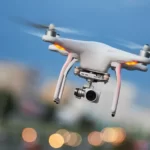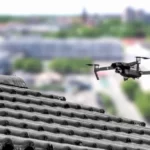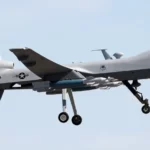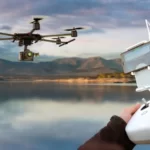There are many current uses for drones and the potential future uses are endless. Aside from being fun to fly they are also used for aerial photography, delivering medical supplies, counting cattle, land surveying, crowd monitoring, the media, recreational sport, military applications and much more.
Drones were originally developed in the military as a way to deliver bombs. Over the years much of the research and technology of drones has continued to advance through the study of military applications. Today drones are used for recognisance as well as monitoring areas of interest without risking human lives.
Quadcopters in particular have an advantage in that they can land and take of completely vertically, unlike plane style drones which need a long horizontal take off. This can be useful if the drone is required to land on a building or narrow area or for descending into tight spaces.
In several countries drones have been used by the media to cover things such as catastrophic bush fires where it wouldn’t otherwise be safe to send in a camera crew. After Cyclone Katrina, drones were used in New Orleans to help scan for stranded survivors so that boats could come in and rescue them.
Drones are used in agriculture for land surveying and In Japan drones have been used for crop dusting for over 25 years. Drones have also been use by large cattle farmers as a way of searching for and identifying livestock across great expanses of property.
Companies such as Amazon, Google, Apple and Dominoes are looking at drones as a way to deliver goods to consumers. At current there are still details that need to be worked out but we should be seeing drone deliveries as a viable option in the not too distant future.
A recent trial in Australia used drones to deliver various packages across large expanses of property. The next step is to work out ways to enable the drones to fly for greater distances without losing signal or running out of batteries. They are also limited by the amount of weight they can carry, so at least for now we’ll only be getting small things delivered by UAV’s.
With the development of camera and film technology one of the most popular uses for drones is taking aerial photography and First Person View (FPV) film. Quadcopters allow you to film places up close and personal that wouldn’t be possible otherwise. You don’t have to search YouTube for very long to come across some truly unbelievable videos taken by drones of extreme sports like base jumping, cross country skiing, paragliding or parkour.
Photographers have also one prestigious awards for up-close still shots of active volcanoes, ocean reefs, wild animals and wildfires that are simply breathtaking.
Science owes a lot to drones for making research easier and more accurate. Drones have allowed the National Oceanic and Atmospheric Administration (NOAA) to collect data of sea level temperatures that are much more accurate. Green Peace has been able to monitor whale migration without disturbing the animals. The Commonwealth Scientific and Industrial Research Organisation (CSIRO) in Australia has used drones with infrared technology as a way of monitoring animal populations.




